-
 Bitcoin
Bitcoin $85,402.2123
3.76% -
 Ethereum
Ethereum $1,912.1135
4.91% -
 Tether USDt
Tether USDt $0.9999
0.01% -
 XRP
XRP $2.1403
2.54% -
 BNB
BNB $610.0081
0.84% -
 Solana
Solana $127.1890
1.66% -
 USDC
USDC $1.0000
0.00% -
 Dogecoin
Dogecoin $0.1745
5.29% -
 Cardano
Cardano $0.6802
3.04% -
 TRON
TRON $0.2373
-0.68% -
 Toncoin
Toncoin $4.0635
-0.78% -
 Chainlink
Chainlink $14.1001
4.34% -
 UNUS SED LEO
UNUS SED LEO $9.2580
1.29% -
 Stellar
Stellar $0.2725
3.44% -
 Avalanche
Avalanche $19.7324
5.30% -
 Sui
Sui $2.4116
6.24% -
 Shiba Inu
Shiba Inu $0.0...01269
2.77% -
 Hedera
Hedera $0.1705
4.39% -
 Polkadot
Polkadot $4.1813
3.94% -
 Litecoin
Litecoin $84.7616
1.96% -
 MANTRA
MANTRA $6.2977
1.23% -
 Bitcoin Cash
Bitcoin Cash $309.4420
2.22% -
 Bitget Token
Bitget Token $4.6257
2.87% -
 Dai
Dai $1.0000
0.02% -
 Ethena USDe
Ethena USDe $0.9999
0.01% -
 Pi
Pi $0.7081
-1.35% -
 Hyperliquid
Hyperliquid $13.3244
2.69% -
 Monero
Monero $217.8552
1.29% -
 Uniswap
Uniswap $6.2939
5.48% -
 Aptos
Aptos $5.4245
3.14%
Are the mining income affected by the mining pool allocation mechanism?
Mining pools use methods like PPS, PPLNS, and PROP to distribute rewards, each affecting miner income differently based on factors like network difficulty and pool fees.
Mar 31, 2025 at 05:49 pm
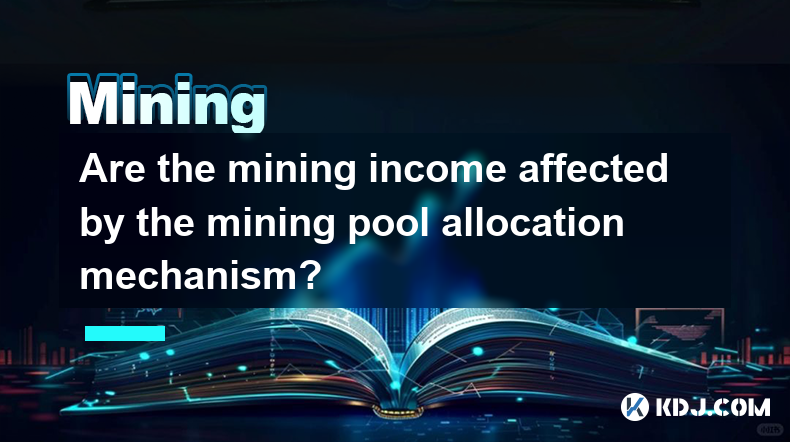
Understanding Mining Pool Allocation Mechanisms
Mining pools aggregate the hashing power of many miners to increase the chances of successfully mining a block. The reward for successfully mining a block is then distributed among the pool's participants based on their contribution – usually measured in shares submitted. The allocation mechanism determines how this distribution happens. Different pools utilize various methods, each with its own advantages and disadvantages. The most common methods include PPS (Pay Per Share), PPLNS (Pay Per Last N Shares), and PROP (Proportional). Understanding these mechanisms is crucial for miners to estimate their potential earnings.
How Different Allocation Mechanisms Impact Income
PPS (Pay Per Share): This method pays miners for each share they submit, regardless of whether the pool finds a block. This provides consistent income, but the pool operator bears the risk of not finding blocks. Miners receive a slightly reduced payout compared to the full block reward due to the pool's fees.
PPLNS (Pay Per Last N Shares): This method pays miners based on their contribution over the last 'N' shares submitted before a block is found. It's more rewarding if the pool is consistently finding blocks, but it can lead to income fluctuations if the pool experiences periods of low luck. The value of 'N' varies between pools.
PROP (Proportional): This is a simpler method where the block reward is distributed proportionally to each miner's contribution to the total hashing power of the pool. This is straightforward but can be less predictable than PPS due to variations in the pool's overall mining success. Miners with higher hashing power will generally receive a larger share.
Score-Based Systems: Some pools employ more sophisticated score-based systems that take into account factors beyond just shares submitted. These might include things like the miner's uptime or their contribution to the pool's overall stability. These systems aim for a fairer distribution, but they can be more complex to understand.
Factors Beyond the Allocation Mechanism Affecting Mining Income
While the allocation mechanism significantly impacts income distribution, other factors also play a crucial role. These include:
Network Difficulty: As the network difficulty increases, the chance of finding a block decreases, affecting the income of all miners, regardless of the pool's allocation mechanism. This is an external factor beyond the control of the pool or individual miners.
Hashrate: The amount of hashing power a miner contributes directly affects their share of the rewards. Higher hashrate generally translates to higher earnings, irrespective of the chosen allocation method.
Block Reward: The cryptocurrency's block reward is a fundamental determinant of mining profitability. A higher block reward naturally leads to higher potential income for miners. Changes in the block reward, often scheduled as part of a cryptocurrency's design, directly impact mining profitability.
Pool Fees: All pools charge fees, usually a percentage of the block reward. These fees reduce the net income received by miners. Different pools have different fee structures. Choosing a pool with lower fees can improve overall profitability.
Electricity Costs: The cost of electricity to power mining hardware is a major expense for miners. High electricity prices significantly impact profitability, and this cost is independent of the pool's allocation mechanism.
Choosing the Right Mining Pool: A Balanced Approach
Selecting a mining pool involves considering several factors beyond just the allocation mechanism. Miners should analyze pool fees, pool hashrate (to ensure consistent block finds), uptime, and the reputation of the pool operator. The choice of allocation mechanism should be viewed in the context of these other factors. Some miners prefer the consistency of PPS, while others might tolerate the variability of PPLNS for potentially higher rewards.
Common Questions and Answers
Q: Is PPS always the best allocation mechanism?
A: Not necessarily. While PPS offers consistent payouts, it can result in lower overall earnings compared to other methods if the pool's luck is high. The reduced payout per share compensates for the pool operator's risk.
Q: How does network difficulty affect my mining income regardless of the pool?
A: Higher network difficulty makes it harder to find blocks, reducing the frequency of rewards for all miners within a pool, regardless of the allocation mechanism.
Q: Can I switch mining pools easily?
A: Yes, generally you can switch pools relatively easily. However, you might need to configure your mining software accordingly.
Q: What is the role of pool hashrate in my earnings?
A: A larger pool hashrate generally increases the frequency of block finds, potentially leading to higher overall earnings, but this is also dependent on the allocation method and the pool's fees.
Q: Are there any risks associated with mining pools?
A: Yes, there's always a risk of pool operators acting dishonestly, although reputable pools with a strong track record minimize this risk. It's crucial to research and choose a trustworthy pool.
Q: How do I choose the right 'N' value in PPLNS?
A: The optimal 'N' value depends on your risk tolerance and the pool's historical performance. A higher 'N' reduces short-term fluctuations but might delay payments. A lower 'N' offers faster payouts but increases income volatility.
Q: How often are payments made in a mining pool?
A: Payment frequencies vary across pools, ranging from daily to weekly payouts. This is usually specified by the pool's terms and conditions.
Disclaimer:info@kdj.com
The information provided is not trading advice. kdj.com does not assume any responsibility for any investments made based on the information provided in this article. Cryptocurrencies are highly volatile and it is highly recommended that you invest with caution after thorough research!
If you believe that the content used on this website infringes your copyright, please contact us immediately (info@kdj.com) and we will delete it promptly.
- These 5 Altcoins Are Showing Resilience and Attracting Attention Amidst Market Volatility
- 2025-04-02 07:25:12
- Panshibi (SHIBI) launch sparks XRP price speculations amid Binance, Coinbase rumors, sparking growth outlook
- 2025-04-02 07:25:12
- AUSTRAC Forms a Task Force to Investigate Suspicious Activity in Crypto ATM Sector
- 2025-04-02 07:20:12
- Highlights
- 2025-04-02 07:20:12
- Kristin Smith Moves from The Blockchain Association to the Solana Policy Institute
- 2025-04-02 07:15:12
- Coinbase Launches Cardano (ADA) Futures, Targeting New Markets and Accelerating Adoption
- 2025-04-02 07:15:12
Related knowledge
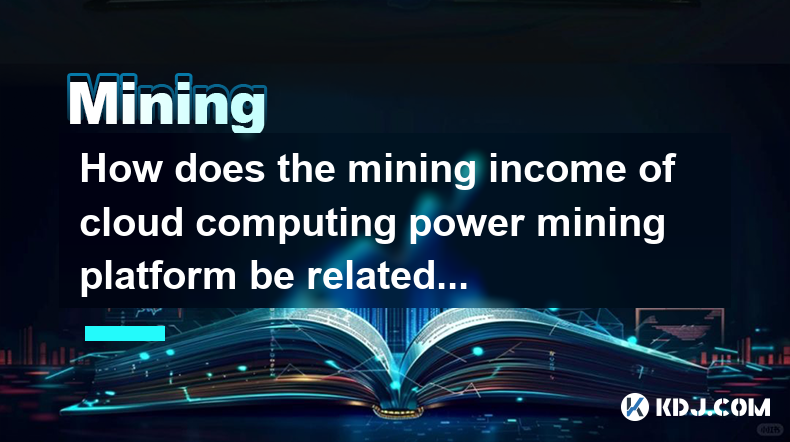
How does the mining income of cloud computing power mining platform be related to mining pool allocation?
Apr 02,2025 at 01:56am
The relationship between the mining income of a cloud computing power mining platform and the allocation of mining pools is a crucial aspect of cryptocurrency mining. Mining income is influenced by various factors such as the efficiency of the mining hardware, electricity costs, and the specific cryptocurrency being mined. However, the allocation of min...
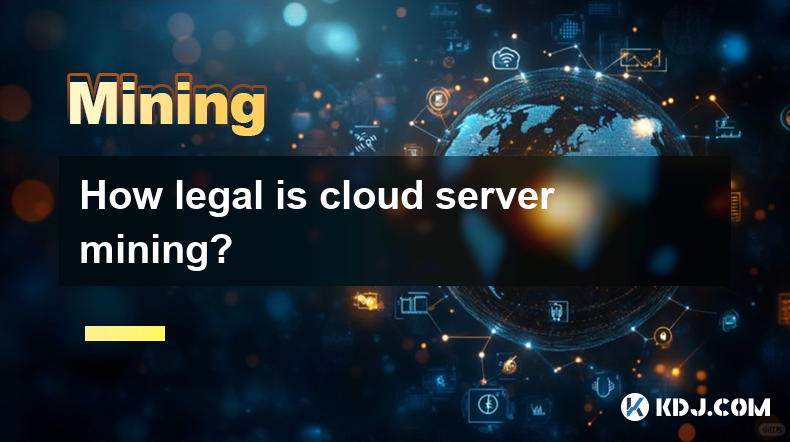
How legal is cloud server mining?
Apr 01,2025 at 08:08am
Cloud server mining has become an increasingly popular method for individuals and companies to participate in cryptocurrency mining without the need for expensive hardware and high electricity costs. However, the legality of cloud server mining can be a complex issue, as it varies by jurisdiction and depends on several factors. This article will explore...
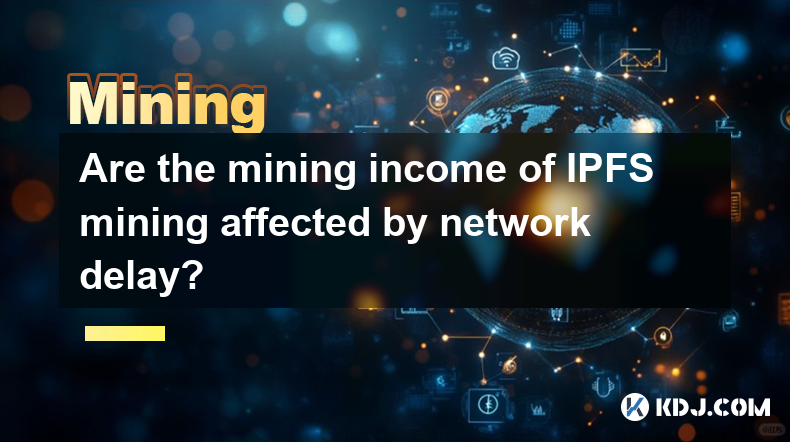
Are the mining income of IPFS mining affected by network delay?
Apr 01,2025 at 09:36pm
Are the Mining Incomes of IPFS Mining Affected by Network Delay? Understanding IPFS Mining and Network Delay's ImpactIPFS (InterPlanetary File System) mining, unlike Bitcoin mining, doesn't involve solving complex cryptographic puzzles. Instead, it focuses on providing storage and bandwidth to the network. Miners earn rewards for storing and sharing dat...
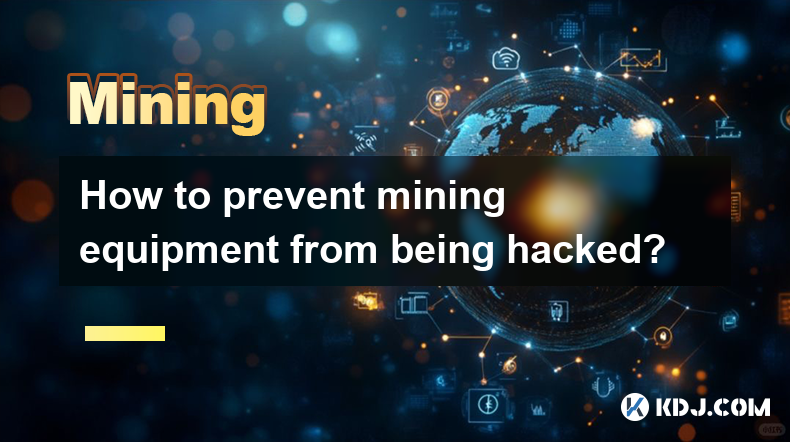
How to prevent mining equipment from being hacked?
Apr 01,2025 at 06:22am
Understanding the ThreatsCryptocurrency mining, while potentially lucrative, exposes your equipment to various cyber threats. These threats range from simple malware infections that steal your mining profits to sophisticated attacks that hijack your entire operation. Understanding these threats is the first step in effective protection. This includes r...
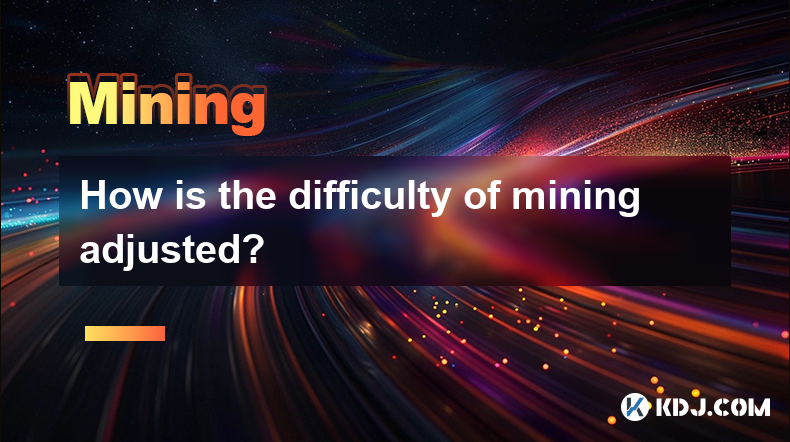
How is the difficulty of mining adjusted?
Apr 01,2025 at 07:14am
Understanding Bitcoin's Difficulty Adjustment MechanismBitcoin's mining difficulty is a crucial element ensuring the network's stability and security. It dynamically adjusts to maintain a consistent block generation time, approximately every 10 minutes. This adjustment prevents miners with overwhelming computing power from monopolizing block creation a...

How to purchase mining equipment for FIL mining?
Apr 01,2025 at 09:49pm
Understanding FIL Mining Hardware RequirementsFilecoin (FIL) mining, unlike Bitcoin mining, doesn't rely on ASICs (Application-Specific Integrated Circuits). Instead, it utilizes storage-based mining, requiring powerful storage hardware and a robust network connection. This means you'll need to invest in storage servers, often referred to as storage no...

How does the mining income of cloud computing power mining platform be related to mining pool allocation?
Apr 02,2025 at 01:56am
The relationship between the mining income of a cloud computing power mining platform and the allocation of mining pools is a crucial aspect of cryptocurrency mining. Mining income is influenced by various factors such as the efficiency of the mining hardware, electricity costs, and the specific cryptocurrency being mined. However, the allocation of min...

How legal is cloud server mining?
Apr 01,2025 at 08:08am
Cloud server mining has become an increasingly popular method for individuals and companies to participate in cryptocurrency mining without the need for expensive hardware and high electricity costs. However, the legality of cloud server mining can be a complex issue, as it varies by jurisdiction and depends on several factors. This article will explore...

Are the mining income of IPFS mining affected by network delay?
Apr 01,2025 at 09:36pm
Are the Mining Incomes of IPFS Mining Affected by Network Delay? Understanding IPFS Mining and Network Delay's ImpactIPFS (InterPlanetary File System) mining, unlike Bitcoin mining, doesn't involve solving complex cryptographic puzzles. Instead, it focuses on providing storage and bandwidth to the network. Miners earn rewards for storing and sharing dat...

How to prevent mining equipment from being hacked?
Apr 01,2025 at 06:22am
Understanding the ThreatsCryptocurrency mining, while potentially lucrative, exposes your equipment to various cyber threats. These threats range from simple malware infections that steal your mining profits to sophisticated attacks that hijack your entire operation. Understanding these threats is the first step in effective protection. This includes r...

How is the difficulty of mining adjusted?
Apr 01,2025 at 07:14am
Understanding Bitcoin's Difficulty Adjustment MechanismBitcoin's mining difficulty is a crucial element ensuring the network's stability and security. It dynamically adjusts to maintain a consistent block generation time, approximately every 10 minutes. This adjustment prevents miners with overwhelming computing power from monopolizing block creation a...

How to purchase mining equipment for FIL mining?
Apr 01,2025 at 09:49pm
Understanding FIL Mining Hardware RequirementsFilecoin (FIL) mining, unlike Bitcoin mining, doesn't rely on ASICs (Application-Specific Integrated Circuits). Instead, it utilizes storage-based mining, requiring powerful storage hardware and a robust network connection. This means you'll need to invest in storage servers, often referred to as storage no...
See all articles























































































